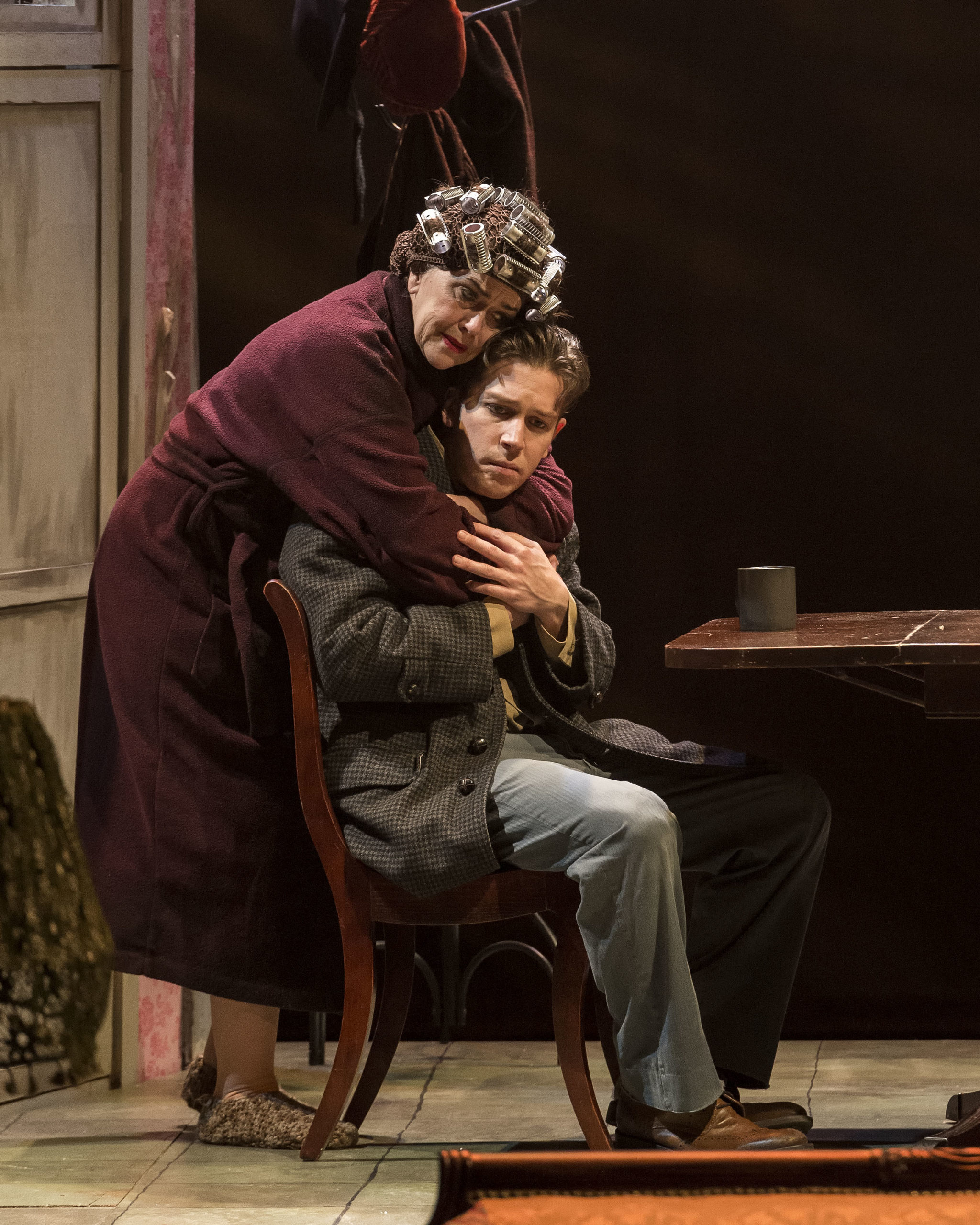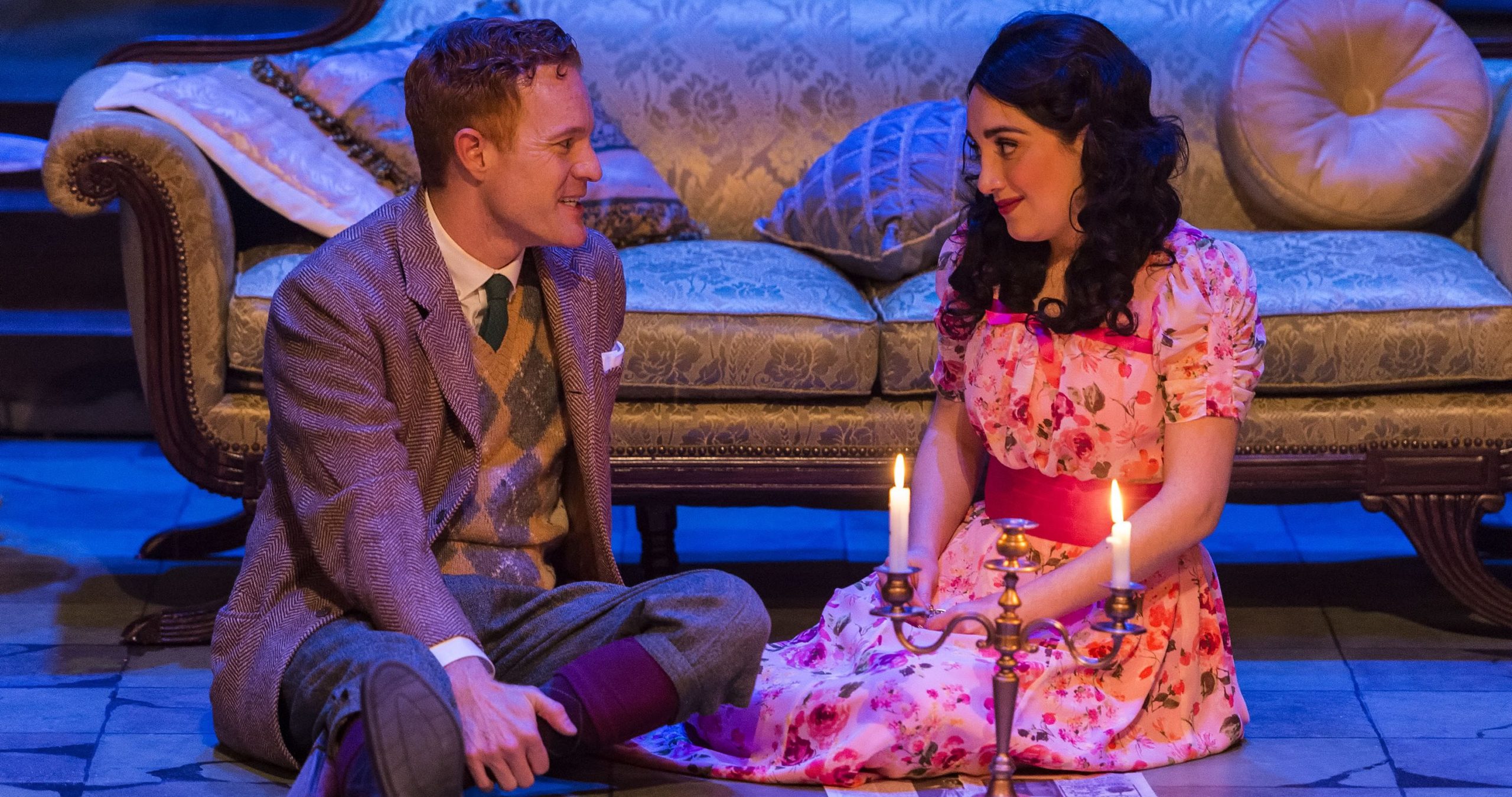
By May S. Ruiz
‘The Glass Menagerie,’ the autobiographical play that launched Tennessee Williams to great renown, takes off at A Noise Within (ANW) from February 24 through April 26. It made its debut in 1944 in Chicago, moved to Broadway a year later, and earned Williams the New York Drama Critics’ Circle Award.
In the play, an innocuous visit from a potential suitor unsettles the sheltered Wingfield family. At the center of this drama is matriarch Amanda who fiercely protects her adult children from the harshness of others, oblivious to the likelihood that her eccentricities are the biggest threat to their well-being.
First produced by ANW during its 1997-1998 season, it was directed by Julia Rodriguez-Elliott and starred Geoff Elliott narrating as Tom Wingfield, with Deborah Strang as the imposing matriarch Amanda Wingfield.
This re-staging of ‘The Glass Menagerie’ is helmed by Producing Artistic Director Geoff Elliott and features four resident artists – Deborah Strang returns as Amanda, Rafael Goldstein as Tom Wingfield and the narrator from whose memory the story is told, Erika Soto as Laura Wingfield, and Kasey Mahaffy as the gentleman caller, Jim O’Connor.
Soto, one of ANW’s two newly installed resident artists (the other is Kasey Mahaffy, who shares the stage with her in the play), talks about the play, her role, and the challenges in inhabiting the character of Laura.
“I found ‘Glass Menagerie’ moving in its mundane complexity; it’s so revelatory of American psyche,” Soto says. “Even as the play has a resonant theme, it was inspired by Tennessee Williams’s specific experience – as a writer, as a gay man, and as a reluctant patriarch and caretaker of his family.”

“Laura is the foil to Amanda’s energy,” Soto describes. “If Amanda is this almost ridiculous force – this hurricane – Laura is the eye of the storm. Tom, as the narrator, is navigating in and out of this experience. And you see that as he moves in and out of the house; he’s the one with the mobility even if that comes with consequences. He’s the one yearning to escape from this place. Tom breaks free externally while Laura does it internally; she navigates the storm by going within. She lives in her own little world, which is an oasis, with the music she listens to and her glass menagerie, which she has such a devotion for. That has given her an inner strength, whether that’s for better or for worse. It’s her coping mechanism and what makes her function in society. It’s her survival instinct – to cocoon, and that’s her safe space.”
“In the beginning, I struggled connecting with Laura because she was written as someone who is so shy, so afraid, so apologetic,” reveals Soto. “She wanted to disappear, to placate, and to do whatever is necessary to keep the calm. And I am so not like that. At all. That was more challenging than I ever thought. If this role had come years ago, when I was in my early 20s, I would have said ‘Easy-peasy! I know what that feels like.’ But those years are now in the rearview mirror. The 30-year old me is vivacious and alive, an activist and a feminist. But, then again, it wouldn’t be called acting if I were to play someone exactly like me. And, having had my share of playing the ingénue, I have that well to draw from.”
Adds Soto, “Laura’s physical limitation, which we have decided was the result of her bout of polio, helps put me in a vulnerable place and rationalizes my need to feel safe. She lives in a world where the boxes are very different and are a lot smaller – there are only so many places she could go and there’s only so much power she has. I made those the parameters around which to work.
“Thankfully, Tennessee Williams didn’t write static characters with linear lives. Laura has an immense arc in the course of a night. In fact, in this story, I see her journey as being a full circle. She starts in a place and experiences something she never expected to. Through circumstance, and tragedy in a way, she comes back. And there’s a kind of peace to that … it’s sort of a melancholy peace. And I think that is what’s so heartbreaking. You meet this person, and you imagine she’s going to reach that crescendo, and burst off the page.”

“That said, I choose not to think of Laura as a victim because I don’t find that interesting,” Soto discloses. “To see any woman as a victim is very lame to me in terms of actionable character. I see her as a response to her environment – a product of her time and space. She is just like any of us, responding to people in our lives and the hand we’re dealt, with our own personal insecurities and resistance.”
“I feel you should have a big ‘spoiler alert’ disclaimer at the beginning of your article,” Soto cautions before continuing. “I think Laura does have a moment where she takes a chance and tries to embody someone she hadn’t even imagined she could be. To me, someone who takes authority over her own experience can never be a victim.”
As she inhabited the role, Soto discovered something about Laura that she didn’t know going in. She divulges, “It wasn’t until I started to think about her inner life, and the kind of strength it takes to survive a mother like Amanda, that made me appreciate her. That’s quite interesting and complex. Then I thought, here’s a man writing about these ridiculous women. Maybe if a woman had written Amanda and Laura, they wouldn’t be such polar opposites and so extreme. It wasn’t genuine femininity but stereotypical ideas of femininity – the aggressive, bite-your-head-off, hysterical mother and the trembling, terrified, apologetic, little doe of a daughter. Women are none of these things!”
“I had never read the play before now, nor have I seen it performed, and I like it that way,” Soto confesses. “As embarrassing as it is to admit ignorance about something so iconic, I prefer having a blank slate – to discover it and it being fresh for me so that my performance also translates that way to the audience – rather than having to live up to decades of expectation, or to deliver lines with a precious quality, which is not real to the character. The characters in this play don’t know they’re iconic, they’re just people.
“But I have to honor who Tennessee Williams perceived in telling the story about his sister because it was his reality. It’s his story and that’s what we’re telling. Even if, ideally, I want to apply the things I try to practice in my daily life to the stories I’m telling. And it’s only a piece of a puzzle as well, it’s her piece, along with Amanda’s, and Tom’s, and the gentleman caller’s – all these parts tell a bigger story.”

Asked what the audience would find relevant, Soto pauses to consider the question before responding, “I personally relate a lot to Tom in his churning, boiling, and brimming fire where he feels something’s got to give. I think that’s fascinating to watch. Tom says ‘I’m boiling inside; I’m ready for adventure. I’m tired of watching other people having it.’ He talks a lot about the impending war and that war is when the common man can have his adventure. He also mentions movies, he’s constantly wanting to go to the movies. This would resonate in Los Angeles, especially in our media-driven world, where we’re watching people from our TV screens, our phones, and laptops. We could relate that to our idolization of celebrity, stars, and the fantastical world we see in films. I love his idea that we sit there and watch other people have adventures and live fantastical lives. That, to me, is such a call to action.”
Soto confesses she hasn’t really thought about the audience takeaway in great depth, but concedes, “It isn’t necessarily a feel-good play but I hope they’re moved. I want for them to react the same way I do after watching a movie or a play … to say ‘I know! Me too!’ Whatever that is – it could be ‘I know, me too, I also feel extremely depressed’ or ‘I know, me too, I have that kind of mom or that kind of relationship with my mom.’ I feel that’s why we tell stories. And however you want theatre to be, it’s all therapeutic, it’s catharsis. I hope the play strikes a chord and, in doing so, is vibrational enough that it shifts something, or validates them in some way.”
“And I think that’s why we go to the theatre and why stories are valuable to us as human beings. It’s such a ritualistic thing we do – gathering in groups in a particular space. How different is that from, I don’t know, church? It’s a community of people enjoying a common experience. There’s something strange and magical about,” Soto concludes.
While ‘The Glass Menagerie’ was specific to Tennessee Williams’s upbringing, the feeling of being constrained by societal expectations or being stuck in a rut is something most of us can relate to. Lest the play engender resignation and hopelessness may it, instead, impel us to take the reins and change course. That sense of personal agency is key to owning our life.







